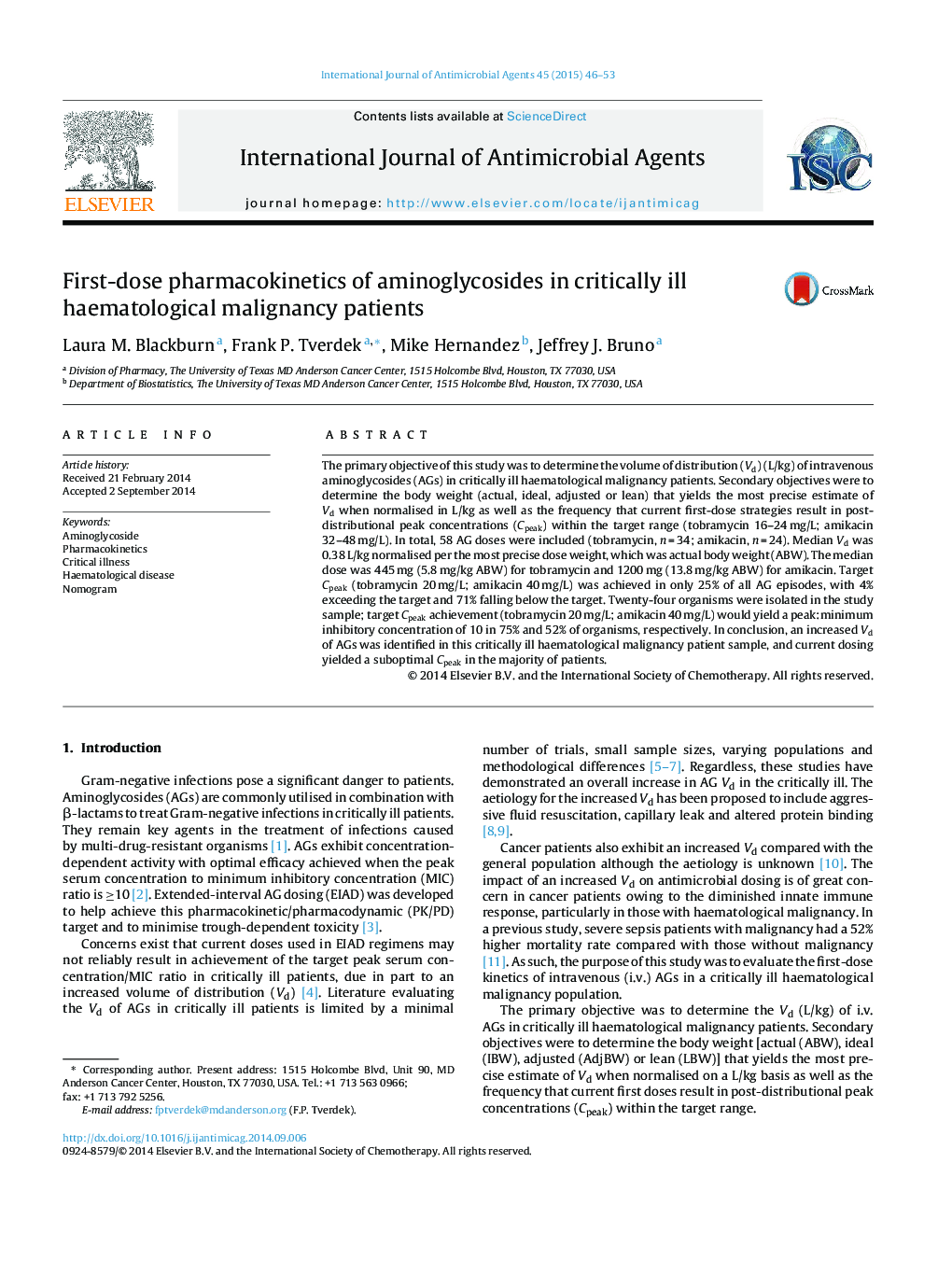| Article ID | Journal | Published Year | Pages | File Type |
|---|---|---|---|---|
| 3358739 | International Journal of Antimicrobial Agents | 2015 | 8 Pages |
•An increased volume of distribution was found in a sample of critically ill haematological malignancy patients.•The body weight that yielded the most precise estimation of volume of distribution was actual body weight.•Current aminoglycoside doses resulted in suboptimal peak concentrations in the majority of the study sample.•Further examination of dose optimisation via comprehensive population pharmacokinetic analyses is needed in the critically ill haematologic malignancy population.
The primary objective of this study was to determine the volume of distribution (Vd) (L/kg) of intravenous aminoglycosides (AGs) in critically ill haematological malignancy patients. Secondary objectives were to determine the body weight (actual, ideal, adjusted or lean) that yields the most precise estimate of Vd when normalised in L/kg as well as the frequency that current first-dose strategies result in post-distributional peak concentrations (Cpeak) within the target range (tobramycin 16–24 mg/L; amikacin 32–48 mg/L). In total, 58 AG doses were included (tobramycin, n = 34; amikacin, n = 24). Median Vd was 0.38 L/kg normalised per the most precise dose weight, which was actual body weight (ABW). The median dose was 445 mg (5.8 mg/kg ABW) for tobramycin and 1200 mg (13.8 mg/kg ABW) for amikacin. Target Cpeak (tobramycin 20 mg/L; amikacin 40 mg/L) was achieved in only 25% of all AG episodes, with 4% exceeding the target and 71% falling below the target. Twenty-four organisms were isolated in the study sample; target Cpeak achievement (tobramycin 20 mg/L; amikacin 40 mg/L) would yield a peak:minimum inhibitory concentration of 10 in 75% and 52% of organisms, respectively. In conclusion, an increased Vd of AGs was identified in this critically ill haematological malignancy patient sample, and current dosing yielded a suboptimal Cpeak in the majority of patients.
